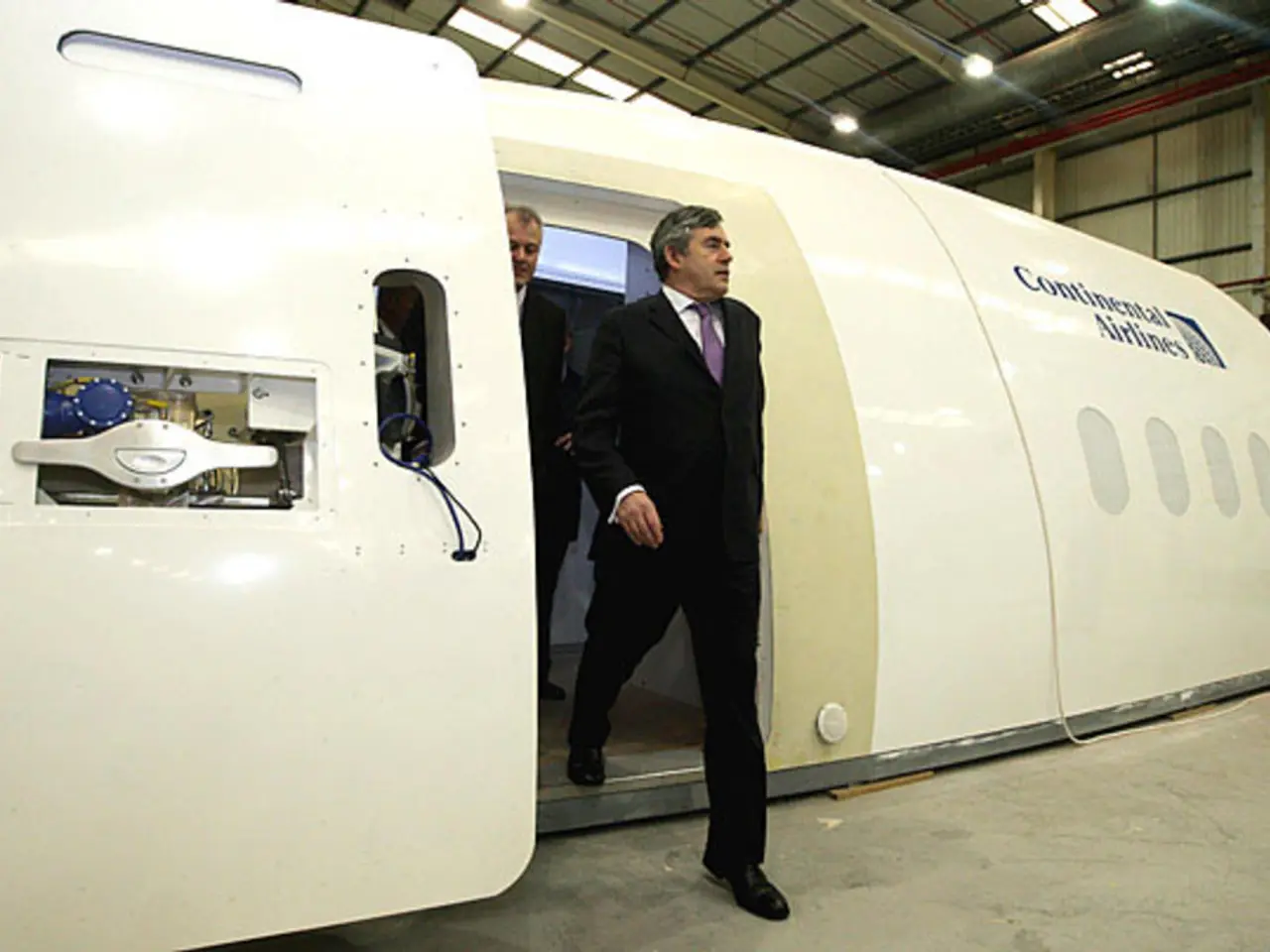Examining Approaches Beyond U-Space: A Look at Integration Following Segregation
In the ever-evolving world of aviation, a new era is dawning as Unmanned Traffic Management (UTM) systems take centre stage. These systems, designed to facilitate safe drone operations at low altitudes, are acting as practical interim solutions before the full realization of the U-space concept and infrastructure.
The market for U-space Service Providers (USSPs) is expected to be competitive, with a Single Common Information Service (CIS) provider ensuring a reliable, single source of information. This competitive landscape is set to drive innovation and efficiency in the sector, making way for safer and more scalable drone operations.
The ultimate goal is to ensure the safe integration of unmanned aviation with manned aircraft in the same airspace. To achieve this, the UK is following a safety-focused approach from segregation to accommodation to integration for Beyond Visual Line of Sight (BVLOS) flights. This approach involves the implementation of designated Danger Areas and Temporary Segregated Areas in uncontrolled and controlled airspace, respectively.
In the accommodation phase, a managed Temporary Restricted Area (TRA) will be implemented, supervised by the air navigation service provider (ANSP). However, expanding services to unmanned aviation outside controlled airspace may fall outside the scope of ANSP responsibilities.
This is where potential UTM service providers come into play. Companies like Airspace Link and Dronetag are offering operational services such as flight planning, compliance checking, and situational awareness that bridge current regulatory and technological gaps ahead of U-space regulation full deployment.
Airspace Link, for instance, offers digital infrastructure for UAS traffic management, including route planning, regulatory compliance, and dynamic airspace data. Dronetag, a joint venture between DFS (German Air Navigation Service Provider) and Deutsche Telekom, provides Remote ID-enabled UTM services, integrating drone identification data to increase airspace safety and predictability.
These providers focus on maintaining safety, scalability, and regulatory compliance in unmanned aviation using existing cellular or wireless networks and Remote ID protocols. They are the practical interim solutions that allow unmanned aircraft access and safe operation within controlled airspace before the full realization of the U-space concept and infrastructure.
The demand for BVLOS flights is growing, with applications including public safety, offshore platforms, and medical drone delivery. Anticipated traffic volumes for BVLOS flights are expected to increase significantly once integrated into the airspace. These services can be a future-proof solution for airspaces with insufficient demand for a U-space deployment.
The UK Civil Aviation Authority released a policy concept for BVLOS flights in April 2023, outlining how unmanned aviation can be accommodated within the airspace. The implementation of U-space airspace is being delayed due to several considerations, such as the certification process for new entities, U-space Airspace Risk Assessment, the hearing process, technical infrastructure, and more.
In conclusion, UTM systems from providers like Airspace Link and Dronetag are paving the way for the safe integration of drones in UK skies. They serve as precursors or interim solutions to the more comprehensive and automated U-space environment planned in Europe. As the demand for BVLOS flights continues to grow, these practical interim solutions will play a crucial role in ensuring the safe and efficient integration of unmanned aviation with manned aircraft in the same airspace.
- The competitiveness in the U-space Service Providers (USSPs) market, driven by innovation and efficiency, is expected to lead to the development of practical interim solutions for Unmanned Traffic Management (UTM) systems.
- Companies like Airspace Link and Dronetag are offering operational services such as flight planning, compliance checking, and situational awareness that bridge current regulatory and technological gaps in the drone industry.
- Airspace Link's digital infrastructure for UAS traffic management includes route planning, regulatory compliance, and dynamic airspace data, while Dronetag provides Remote ID-enabled UTM services to increase airspace safety and predictability.
- These UTM service providers focus on maintaining safety, scalability, and regulatory compliance in unmanned aviation using existing cellular or wireless networks and Remote ID protocols.
- The UK Civil Aviation Authority released a policy concept for Beyond Visual Line of Sight (BVLOS) flights in April 2023, indicating the growing demand for such flights in applications such as public safety, offshore platforms, and medical drone delivery.
- The implementation of U-space airspace is being delayed due to several considerations, including the certification process for new entities, U-space Airspace Risk Assessment, the hearing process, technical infrastructure, and more.
- UTM systems from providers like Airspace Link and Dronetag are paving the way for the safe integration of drones in UK skies, serving as precursors or interim solutions to the more comprehensive and automated U-space environment planned in Europe.








